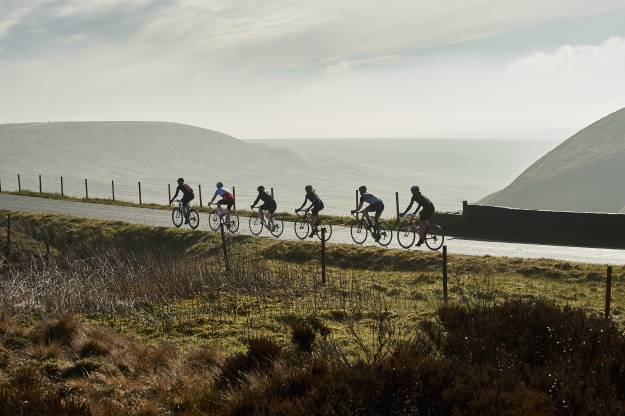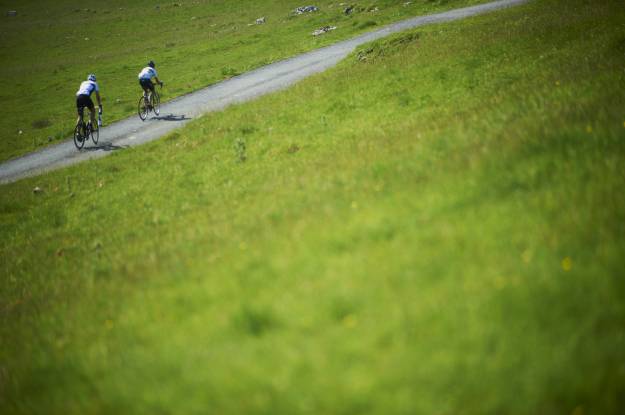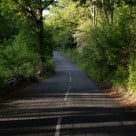Autoglass reveals blind spot dangers for cyclists
 A warning goes out today to Britain's ‘white van man' as a shocking new report reveals that many popular van designs have dangerous blind spots, caused by the A-Pillars on either side of the windscreen, which are wide enough to hide a cyclist, motorbike or group of people from view.
A warning goes out today to Britain's ‘white van man' as a shocking new report reveals that many popular van designs have dangerous blind spots, caused by the A-Pillars on either side of the windscreen, which are wide enough to hide a cyclist, motorbike or group of people from view.
Leading consumer service brand Autoglass® commissioned MIRA (formerly the Motor Industry Research Association) to test driver vision in different makes and models of modern vans and cars. The tests included a calculation of the A-Pillar blind spot, or ‘A-Spot' - the width of objects obscured from a driver's vision at 23 metres; the stopping distance required when travelling at 30mph.
With over 1,800 cyclists and motorcyclists involved in accidents with vans each year2 and at a time when many parents are hiring vans to take their children off to university or college, Autoglass® is keen to warn of the potentially fatal blind spot problem.
The Ford Transit revealed appalling results with an A-Spot measuring 6.4 metres - three times larger than the best performing saloon car, the Mercedes C Class - and capable of hiding two full sized motorcycles or a group of cyclists from the driver's view. The Mercedes Benz Sprinter and Vito also displayed shocking marks with A-Spots of 6.3 metres and 6.2 metres, capable of hiding a group of 15 children. Even the small models didn't escape the horrendous blind spot with the VW Caddy having an A-Spot of 4.2 metres.
Autoglass® undertook the new research as part of its ongoing commitment to road safety. In 2006 the windscreen specialist first commissioned A-Pillar testing in a number of vehicles, revealing worrying blind spot results. Encouragingly, recent test results show that manufacturers have addressed the thickening A-Pillar in newer models - the windscreen posts on the VW Golf, Ford Mondeo, Ford Focus, Toyota Prius and Vauxhall Vectra are all actually thinner now than on their 2006 predecessor. The windscreen specialist is now calling for the Government to review manufacturing guidelines on vans.
The leading cause of fatal, serious and slight crashes on UK roads is drivers ‘failing to look properly' with 49,533 (35%) accidents in 2007. Autoglass® has teamed up with leading road safety organisation RoadSafe and the CTC to warn drivers that there could be a high price to pay for failing to check their A-Pillar blind spot.
Nigel Doggett, managing director at Autoglass® said:
"We are encouraged to see that the research we carried out in 2006 has had an impact on manufacturers and that four out of the five cars tested now have thinner A-Pillars.
"As a large van fleet operator we tested vans this time to highlight that their A-Pillars can have a detrimental effect on the driver's vision, by creating blind spots that pose a real threat to other road users. Apart from the thousands of everyday van drivers in the UK, for many motorists, getting into a van may be something they do only once or twice a year, when moving house, or going off to University, so it is vital that every driver takes extra care to ensure they've seen all of the hazards around them before setting off.
"We will be communicating the A-Spot road safety message to our own internal fleet of van drivers through a road safety programme and all drivers will be issued with advice. We would also like to see the Driving Standards Agency provide guidance for driving instructors on educating new drivers about the A-Spot, the message is clear - drivers must check their A-Spot in every vehicle, or risk paying a high price."
Results from the Department for Transport show that in 2008 16,297 cyclists were injured on the roads, so the A-Pillar blind spot is of great concern to the CTC. Policy coordinator Chris Peck, comments:
"Drivers must take extra care to look in their blind spots because a cyclist can easily be hidden from view. It is the duty of the driver to make sure they have seen everything and everyone around them - especially cyclists and pedestrians. The new research highlights the increasing danger of the A-Pillar blind spot, therefore it is vital that motorists know that they must check all their blind spots when maneuvering"
Adrian Walsh, director of RoadSafe, adds:
"Drivers have a responsibility to familiarise themselves with their vehicle and must ensure their own safety, that of their passengers and, most importantly, other road users, particularly cyclists and motorcyclists; looking out for both rear and forward facing blind spots. The latest report shows that A-Pillar blind spots need to be acknowledged in every vehicle, and the guidance offered by Autoglass® should be noted."
Read more about what you can do to minimise the risks posed by A-Pillars








